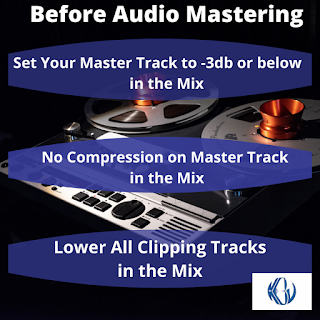Audio Sample Rate and Bit Depth Explained - Get Better Audio Mastering Results
DO NOT LOWER YOUR SAMPLE RATE OR BIT RATE WHEN EXPORTING YOUR TRACKS!
When you lower your sample rate or bit depth, you lower the
quality of your recording. If you plan
to get your songs mastered, you should export them at the same sample rate and
bit depth that they were originally recorded in. Keep in mind that most DAW and interfaces are
set to record at 44.100kHz and 16bit by default. You can set your session to record at a higher
sample rate and bit depth to get a better quality recording but do not lower it
down when you export the tracks. The
mastering engineer can work with those higher formats. A good high quality setting for recording is
48.000kHz and 24bit.
What is the sample rate?
It basically refers to how fast samples are taken of a
particular frequency or piece of audio per second. It is often shown in kHz meaning 1,000 times
per second. Keep in mind that the
standard sample rate for most consumer audio devices like CDs is
44.100kHz. That means that 44,100
samples of that audio are taken per 1,000 seconds.
What is the Bit Depth?
It refers to the number of bits of information present in
every sample. The more bits you have in
an audio file, the more dynamic range you will have in the audio.
·
Simply put.
The sample rate is like a photocopy of the song, and the higher the
sample rate, the clearer the words will appear on the page. The Bit Depth is how many details are printed
on that page. The higher the bit depth,
the more detail in the song.


"By Kelvin Butler" Kelvin Butler is the author of this blog. He also is part owner of KBJ Records.com, a website that caters to the working class musician by offering affordable services in audio mastering, and more. Learn about his very affordable offers at www.kbjrecords.com




Comments